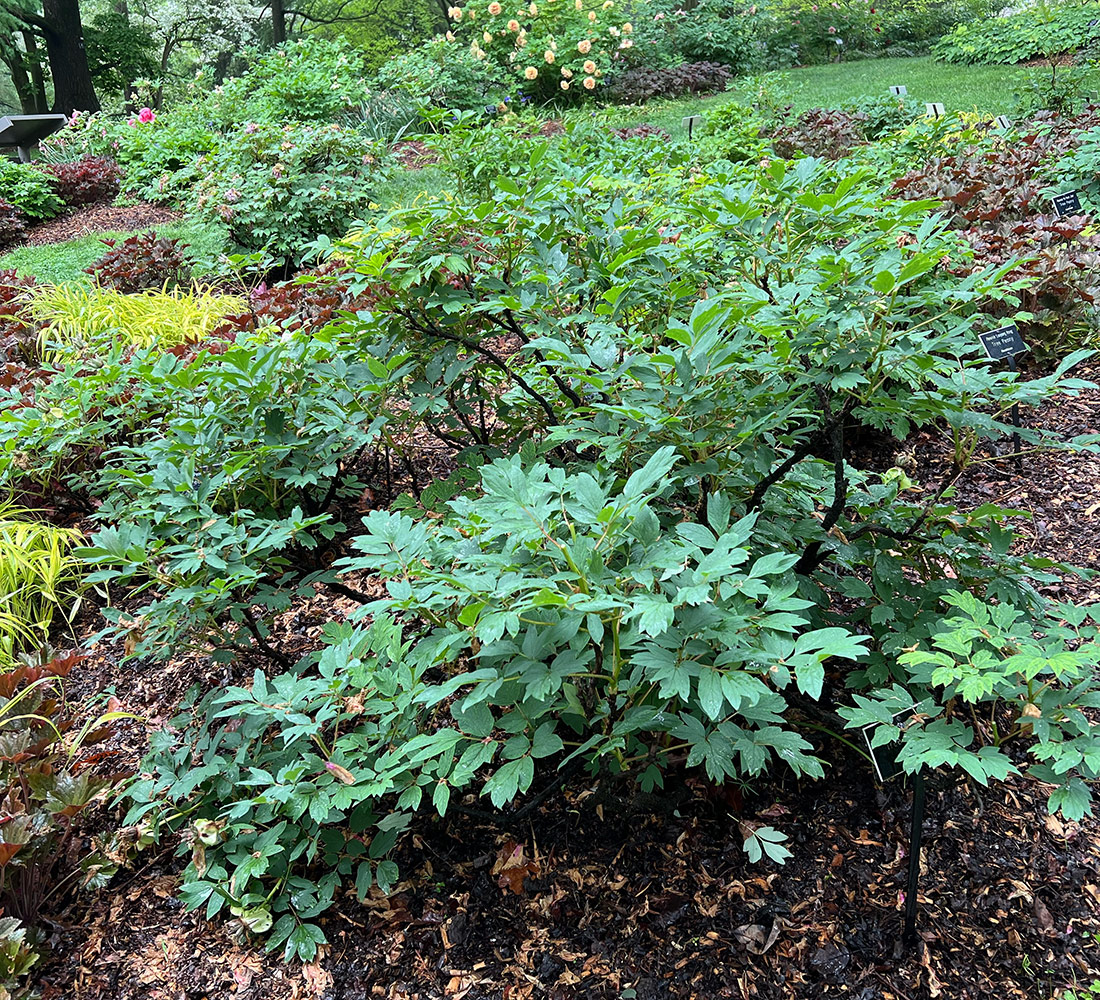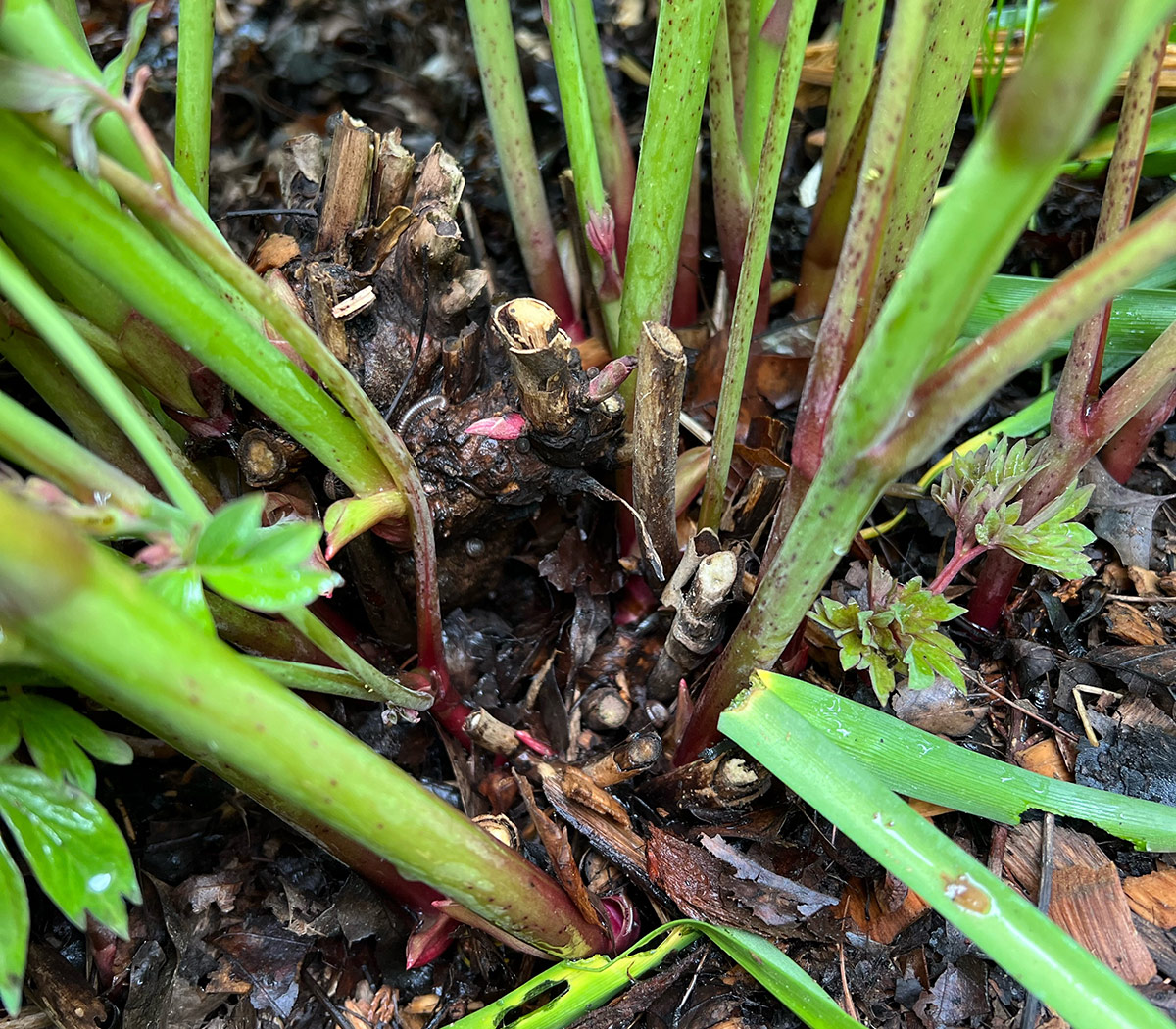As one of the most unmistakable and recognizable flowers in the world, the peony has been revered for its enduring beauty and fragrance for centuries. It is believed that these highly valued blooms have been cultivated in China since 1000 BC. Since then, hybridizers have been creating a myriad of spectacular cultivars in a wide range of colors and flower forms.
Generally easy to care for in the correct environment, these intoxicating blooms have found their way into millions of gardens all over the world. It is not uncommon for a single specimen to live up to 100 years, which speaks to its general toughness and adaptability. However, there are a few key cultural elements you can provide that will maximize plant health and floral display for decades to come.
Peony Planting and Care: Similarities Across All Three Types
There are three main types of peonies: herbaceous, intersectional, and tree or woody peonies. Regarding general peony care overall, the three types have certain similarities: All appreciate well-draining soil with a high organic matter content. One sure way to create an unhappy peony is to have heavy clay soil that is waterlogged. They despise wet roots. And with some individuals producing an abundance of flowers up to 10 inches across, adequate fertility is a must. Soil pH should be neutral to slightly acidic. Upon planting, incorporating a well broken-down compost as well as biochar can aid in creating the right soil environment.
Planting and mulching
Paeonia root systems are a bit territorial and are not fans of having neighbors or competition. It is best to keep all other plants away from the thick fleshy roots. Air circulation and proper spacing is also important for plant vigor. If peonies are planted too closely together, or if insufficient air movement creates a humid environment, foliar fungal pathogens such as powdery mildew and botrytis can be common. Luckily these diseases are not deadly, but they will affect overall health. If either of these pathogens does appear, I recommend removing the affected foliage, which will reduce the spread of the disease in the current growing season as well as the next.
While soggy soil is detrimental, consistent moisture is ideal. Mulching is beneficial for all three types. I use a 50-50 mixture of well-aged leaf compost and woodchips. This aids in keeping the roots shaded and cool and helps retain consistent soil moisture. Then as the mulch decomposes, organic matter works its way down among the root system.
Fertilizing
The specimens under my care receive three applications of slow-release organic fertilizer yearly. One application occurs in early spring as buds being to emerge from belowground or as bud scales begin to crack. This provides a boost in nutrition as the new growth springs forth. The second application follows shortly after petal drop to replace any nutrients used during shoot, foliage, and flower development. The third application is in August and focuses on root development as the plants begin preparing for dormancy. All that being said, it is always advisable to perform a soil test every few years to be certain you are providing the best environment possible. I always say, “Healthy soil equals healthy plants.”

Deadheading and dividing
Unless you are trying your hand at hybridizing your own cultivar, it is best to deadhead peonies shortly after flowering. Since they are self-fertile, a good deal of energy can go into producing seeds, which can deplete energy reserves and reduce blooms the following year. By removing spent blooms, you can avoid the possible energy depletion.
Planting and dividing should be reserved for fall. A great deal of resources stored in the roots over winter go toward new growth and flower development in spring. This means the root system is already a bit compromised in spring, so transplanting or dividing during this time could cause trauma that may take a few years for your peony to recover from. Conversely, if you wait until September to divide or transplant, the built-up resources that have been produced over the growing season are being transported to the root system, and root growth is occurring.

Now Let’s Chat About the Differences
Tree or woody peonies
Tree or woody peonies are perennial woody shrubs. Often growing to 4 feet or more in height, individual stems are winter hardy and can survive for many years. Generally, these peonies are the earliest of the three types to bloom and produce up to dinner plate–size flowers that are often fragrant. The petals of these delicate flowers often fade quickly if they are exposed to harsh afternoon sun, so a location in partial sun is best. A spot with full morning sun with dappled high shade in the afternoon is ideal.

Yearly pruning is not necessary, other than removing dead stems and spent flower stalks. I generally wait to prune the woody specimens until mid-March when it is very easy to see the healthy buds expanding. Any portion of the plant that is not showing signs of life should be removed. Over time as the large mature stems elongate, they can become top heavy due to the weight of the flowers. If this occurs, remove the stem as close to the base of the shrub as possible. This will eliminate the chance of the stem breaking, and it will also stimulate new shoot growth from the base. Depending on the vigor of your individual cultivar, you may not ever have to remove stems.
Intersectional peonies

Intersectional peonies are crosses between herbaceous and woody peonies. These crosses often exhibit the best characteristics of each parent plant. The vigor of the herbaceous peony is exhibited, and the exuberant flower characteristics of the woody peonies are usually present as well. It’s the best of both worlds.

The peonies in this group prefer full sun, which is a minimum of six hours of direct sunlight per day. They differ from woody peonies in that they do require yearly pruning. Individual stems produce semi-woody characteristics and often have viable buds several inches or up to a foot above the soil level. These buds can be winter hardy and can produce flowers, but almost all the tips of each stem will die back. I advise waiting until mid-March to remove all the nonviable stem tips. You will also observe that as the intersectionals are breaking dormancy, they produce many new buds and stems from the base every year. I find that pruning all the stems to the base yearly produces a much more compact tidy habit.
Herbaceous peonies

Herbaceous peonies are true perennials. They produce new shoots from the root system yearly. No part of these plants will ever become woody in nature.
A yearly cutback is necessary to remove all aboveground parts of herbaceous peonies. The timing of this cutback depends on the cultivar you are growing. Many herbaceous cultivars are susceptible to fungal pathogens. These pathogens often show up during the most humid portions of the growing season. The presence of disease often results in off-colored or misshapen foliage, and in severe cases the foliage and stems may begin early dormancy and become brown. If either of these situations occurs, the individual is not properly photosynthesizing, and its long-term health is compromised. I remove all stems to the base and thus remove the pathogen from developing future infestations. If you are lucky enough to avoid fungal pathogens, removal of the aboveground parts can take place any time after dormancy sets in.

More on peonies:
And for more Mid-Atlantic regional reports, click here.
—Adam Glas is a garden supervisor and rosarian at the Scott Arboretum of Swarthmore College in Swarthmore, Pennsylvania.
Photos: Adam Glas





